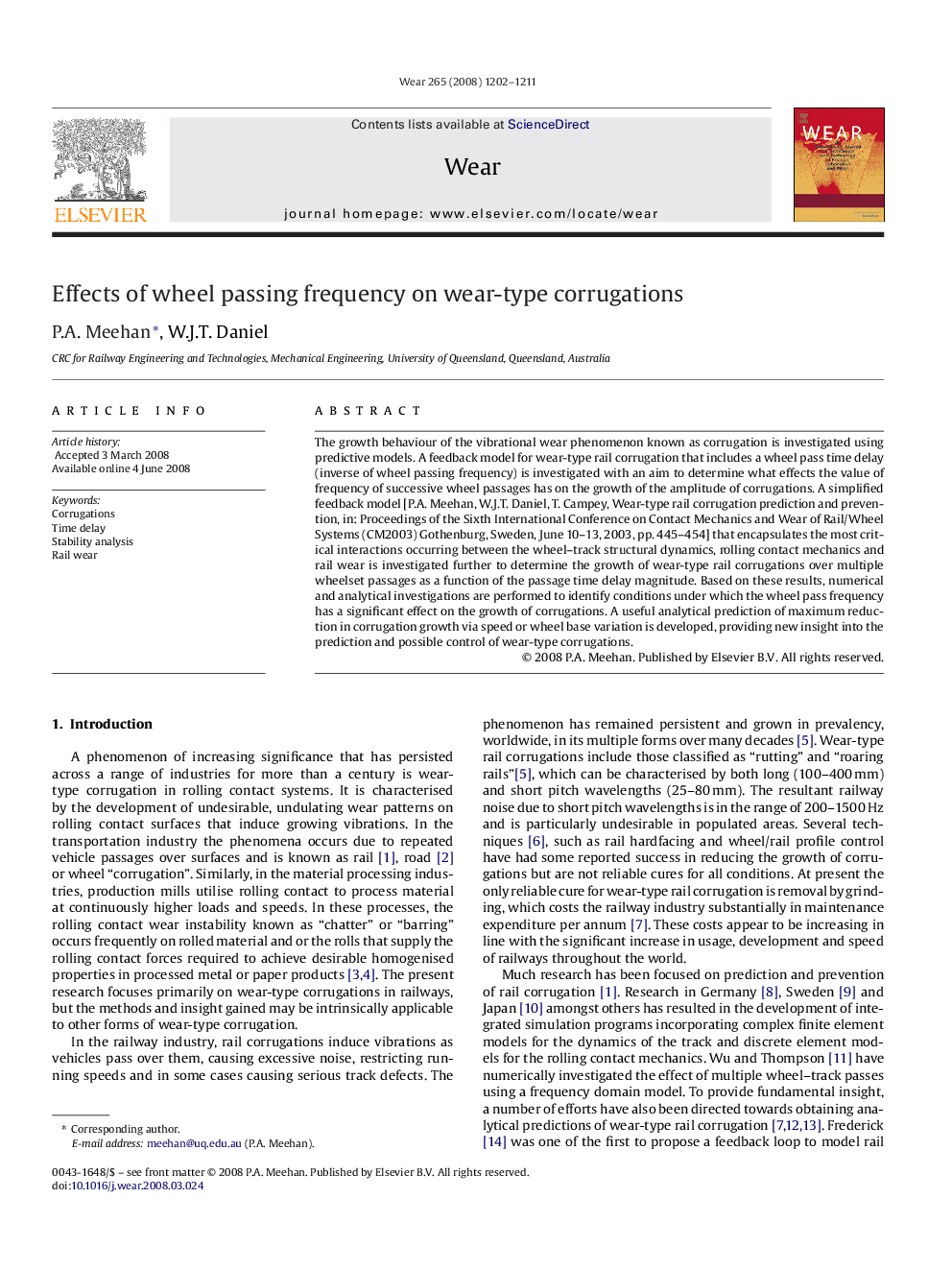| Article ID | Journal | Published Year | Pages | File Type |
|---|---|---|---|---|
| 619077 | Wear | 2008 | 10 Pages |
The growth behaviour of the vibrational wear phenomenon known as corrugation is investigated using predictive models. A feedback model for wear-type rail corrugation that includes a wheel pass time delay (inverse of wheel passing frequency) is investigated with an aim to determine what effects the value of frequency of successive wheel passages has on the growth of the amplitude of corrugations. A simplified feedback model [P.A. Meehan, W.J.T. Daniel, T. Campey, Wear-type rail corrugation prediction and prevention, in: Proceedings of the Sixth International Conference on Contact Mechanics and Wear of Rail/Wheel Systems (CM2003) Gothenburg, Sweden, June 10–13, 2003, pp. 445–454] that encapsulates the most critical interactions occurring between the wheel–track structural dynamics, rolling contact mechanics and rail wear is investigated further to determine the growth of wear-type rail corrugations over multiple wheelset passages as a function of the passage time delay magnitude. Based on these results, numerical and analytical investigations are performed to identify conditions under which the wheel pass frequency has a significant effect on the growth of corrugations. A useful analytical prediction of maximum reduction in corrugation growth via speed or wheel base variation is developed, providing new insight into the prediction and possible control of wear-type corrugations.
